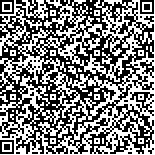附件
|
| 引用本文: | 李大命,阳振,于洋,唐晟凯,张彤晴,周刚.滆湖和骆马湖春季浮游植物光合作用活性的研究.湖泊科学,2013,25(5):688-694. DOI:10.18307/2013.0510 |
| LI Daming,YANG Zhen,YU Yang,TANG Shengkai,ZHANG Tongqing,ZHOU Gang.Photosynthetic activity of phytoplankton in Lake Gehu and Lake Luoma in spring. J. Lake Sci.2013,25(5):688-694. DOI:10.18307/2013.0510 |
|
| |
|
|
| 本文已被:浏览 8087次 下载 4346次 |

码上扫一扫! |
|
|
| 滆湖和骆马湖春季浮游植物光合作用活性的研究 |
|
李大命1, 阳振2, 于洋2, 唐晟凯1, 张彤晴1, 周刚1
|
|
1.江苏省淡水水产研究所, 南京 210017;2.中国科学院南京地理与湖泊研究所湖泊与环境国家重点实验室, 南京 210008
|
|
| 摘要: |
| 本研究应用Phyto-PAM荧光仪测定滆湖和骆马湖春季浮游植物的光合活性,包括浮游植物最大光量子产量Fv/Fm(可变荧光与最大荧光之比)、有效光量子产量ΦPSII(实际光合作用效率)和快速光响应曲线(RLC);同时,采用显微镜对浮游植物进行镜检和计数.结果表明:滆湖蓝藻和硅藻的最大光量子产量分别为0.36~0.52和0.27~0.53,实际光量子产量分别为0.25~0.37和0.25~0.36,没有检测到绿藻的光合活性,RLC曲线表明蓝藻有较高的光合作用效率,更易形成优势种群;骆马湖绿藻和硅藻的最大光量子产量分别为0.45~0.65和0.41~0.49,实际光量子产量分别为0.25~0.32和0.19~0.25,没有检测到蓝藻的光合活性;滆湖浮游植物丰度在530×104~4200×104cells/L之间,平均值为2918×104cells/L,群落组成以蓝藻门、硅藻门、隐藻门和裸藻门为主;骆马湖浮游植物丰度在260×104~510×104cells/L之间,平均值为379×104cells/L,群落组成以硅藻门和绿藻门为主.综合滆湖和骆马湖水体的营养水平、浮游植物丰度和光合作用活性表明,湖泊富营养化能提高浮游植物种群丰度和蓝藻的光合作用活性,进而有利于蓝藻在浮游植物群落中占有竞争优势. |
| 关键词: 湖泊富营养化 光合活性 浮游植物 滆湖 骆马湖 |
| DOI:10.18307/2013.0510 |
| 分类号: |
| 基金项目:江苏省青年自然科学基金项目(BK2012488);江苏省五大湖泊资源环境监测项目(江苏省海洋与渔业局,2012)联合资助 |
|
| Photosynthetic activity of phytoplankton in Lake Gehu and Lake Luoma in spring |
|
LI Daming1, YANG Zhen2, YU Yang2, TANG Shengkai1, ZHANG Tongqing1, ZHOU Gang1
|
|
1.Freshwater Fisheries Research Institute of Jiangsu Province, Nanjing 210017, P. R. China;2.State Key Laboratory of Lake Science and Environment, Nanjing Institute of Geography and Limnology, Nanjing 210008, P. R. China
|
| Abstract: |
| In the present study,Phyto-PAM was applied to measure maximal photochemical quantum yield of PSII (Fv/Fm), actual photochemical efficiency of PSII (ΦPSII),and rapid light response curve (RLC) of phytoplankton samples collected from Lake Gehu and Lake Luoma in spring.Meanwhile,the cell numbers of phytoplankton were counted by microscopy.The results showed that values of Fv/Fm and ΦPSII of cyanobacteria in Lake Gehu varied from 0.36 to 0.52 and from 0.27 to 0.53,and Bacillariophyta, from 0.25 to 0.37 and from 0.25 to 0.36,respectively,but there was no photochemical vitality of Chlorophyta.RLC has indicated that cyanobacteria has higher photochemical vitality and are prone to form advantage populations in Lake Gehu.On the other hand,the values of Fv/Fm and ΦPSII of Chlorophyta and Bacillariophyta in Lake Luoma ranged from 0.45 to 0.65, from 0.41 to 0.49,from 0.25 to 0.32,and from 0.19 to 0.25,respectively,and no photochemical vitality were found for cyanobacteria.The density of phytoplankton in Lake Gehu ranged from 530×104 to 4200×104 cells/L,with an average of 2918×104 cells/L.Cyanophyta,Bacillariophyta,Cryptophyta and Euglenophyta were dominant in the phytoplankton community.The density of phytoplankton in Lake Luoma varied from 260×104 to 510×104 cells/L,with an average of 379×104 cells/L,Bacillaryophyta and Chlorophyta were dominant in the phytoplankton community.According to the comparison between nutritional level,the abundance and photochemical vitality of phytoplankton assemblages in the two lakes,the lake eutrophication can increase the abundance of phytoplankton and photosynthetic activity of cyanobacteria,and become in favor of gaining advantages in phytoplankton assemblages. |
| Key words: Lake eutrophication photosynthetic activity phytoplankton Lake Gehu Lake Luoma |
|
|
|
|